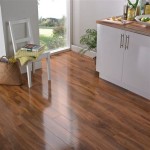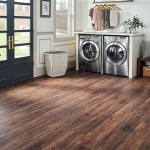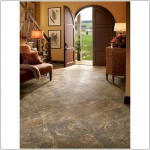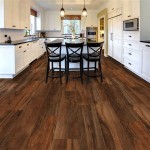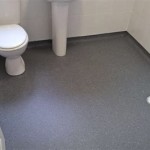When it comes to renovating your kitchen, you want to make sure that you select the best flooring option to meet your needs and make a statement. Laminate flooring is an increasingly popular choice for kitchen flooring due to its affordability, durability, and stylish options. So if you are considering laminate flooring for your kitchen, here is a guide to help you select the right option.
Understanding Laminate Flooring
Laminate flooring is made up of four layers: a wear layer, a design layer, a core layer, and a backing layer. The wear layer is a transparent layer that protects the floor from scratches, dirt, and spills. The design layer is a photographic image that is printed on the surface to give it a realistic look. The core layer is made from high-density fiberboard and provides stability and rigidity to the floor. The backing layer is made from melamine resin and provides additional stability and moisture protection.
Choosing the Right Laminate Flooring for Your Kitchen
When selecting a laminate flooring for your kitchen, there are several factors to consider. First, you should consider the overall look you want to achieve. Laminate flooring comes in a variety of colors, textures, and styles, so you should be able to find the right option to match your kitchen décor. Additionally, you should consider the amount of wear and tear the floor will be subject to, as some laminate flooring is better suited to high-traffic areas than others.
Installing Laminate Flooring in Your Kitchen
Installing laminate flooring in your kitchen is relatively easy and can be done by most DIY enthusiasts. Before you start, you should make sure that the subfloor is level and free of any debris. Then, you will need to measure and cut the planks of laminate flooring to fit the space. Once you have done this, you can start laying the floor planks, making sure to leave a 5mm gap around the edges. Finally, you will need to seal the joints with special edging strips and sealant.
Pros and Cons of Laminate Flooring in the Kitchen
Laminate flooring has many advantages in the kitchen, including its affordability, durability, and stylish options. Additionally, it is easy to install and maintain. However, it is not as durable as other flooring options, such as hardwood, and it can be damaged by water and heavy objects. Additionally, it can be difficult to repair if it is damaged.
Tips for Maintaining Laminate Flooring in Your Kitchen
To ensure the longevity of your laminate flooring, it is important to take good care of it. To do this, you should sweep, mop, and vacuum regularly to keep dirt and debris off the floor. Additionally, you should use furniture pads to protect the floor from scratches, and you should avoid using harsh chemicals or abrasive cleaners. Finally, you should avoid wearing high-heeled shoes or dragging furniture across the floor, as this can cause damage.
Conclusion
Laminate flooring is a great option for kitchen flooring due to its affordability, durability, and stylish options. It is also easy to install and maintain. However, it is important to keep in mind that it is not as durable as other flooring options and can be damaged by water and heavy objects. With the right care and maintenance, however, you can ensure that your laminate flooring will last for years to come.















Related Posts

